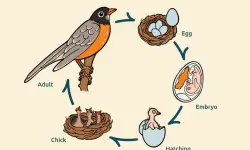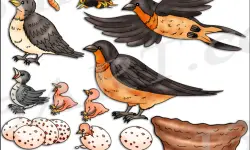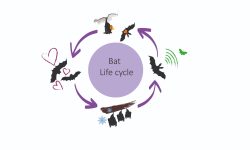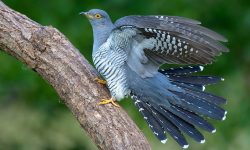Introduction: Voices from the Marshes
Michigan’s wetlands are rich, living mosaics of cattails, quiet shallows, and reed-choked edges—habitats teeming with life yet often overlooked. Hidden among these marshes are some of the state’s most fascinating and secretive birds: members of the order Gruiformes. From the haunting bugle of a Sandhill Crane to the shy rustle of a King Rail in the reeds, these birds are masters of camouflage and survival in waterlogged worlds. This article introduces six Gruiformes you should know if you’re exploring Michigan’s wetlands, whether you’re a curious hiker, a budding birdwatcher, or a passionate conservationist.
1. American Coot (Fulica americana)
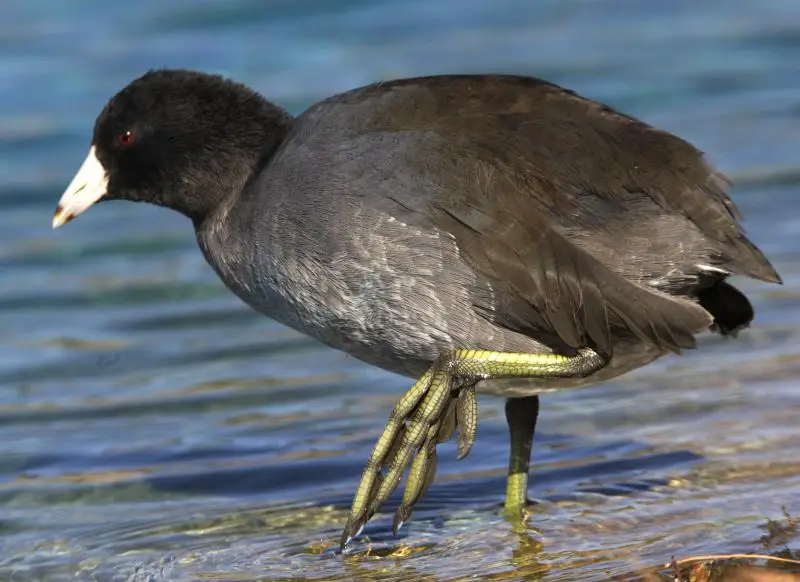
Identification and Behavior
With their dark, slate-gray plumage, white facial shield, and brilliant red eyes, American Coots are unmistakable inhabitants of North American wetlands. Though they often swim alongside ducks and geese, coots belong to a different lineage entirely, being more closely related to rails and gallinules. Their stocky build and jerky, head-bobbing movements on the water make them fascinating to observe. One of their most distinctive traits is their feet—not webbed like a duck’s, but equipped with lobed toes that provide excellent traction both for swimming and walking across dense mats of aquatic vegetation. These adaptations make coots agile in water but somewhat awkward on land, where their gait appears slightly clumsy.
Coots are highly vocal birds, communicating with an array of squawks, grunts, and croaks. They can be aggressive toward intruders, especially during nesting season, when territorial disputes play out in dramatic chases across the water’s surface.
Habitat in Michigan
American Coots are among the most abundant marsh birds in Michigan. They inhabit a wide range of freshwater habitats—from cattail-fringed inland marshes and vegetated lakes to the backwaters of slow-flowing rivers. While they are most visible during spring and fall migrations, many also remain through the summer to breed in the state. Wetlands across both the Lower and Upper Peninsulas support nesting populations, particularly where aquatic vegetation is dense enough to conceal their floating nests. During peak migration, large flocks numbering in the hundreds may gather in sheltered lakes and ponds, forming a chattering mass of activity as they forage and rest on their way north or south.
Ecological Role
As omnivores, coots feed on aquatic plants, algae, insects, and small invertebrates, playing an important role in wetland nutrient cycling.
2. Sandhill Crane (Grus canadensis)
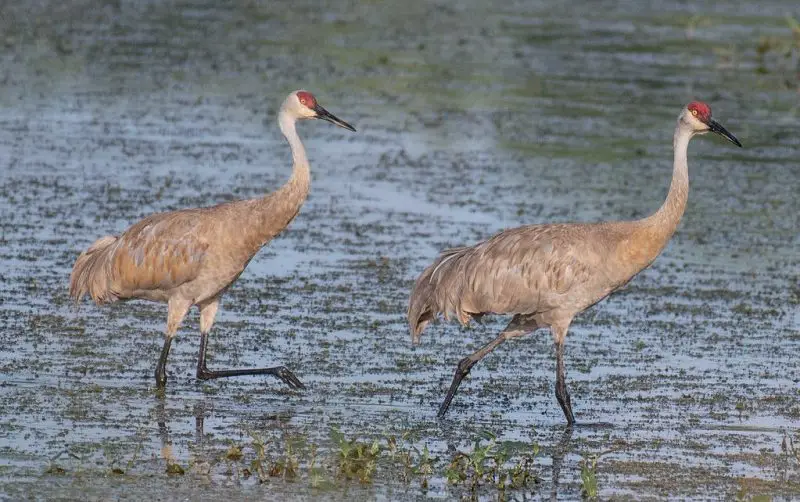
Identification and Behavior
Towering over most wetland birds, the Sandhill Crane is a majestic presence in Michigan’s open spaces. These cranes are notable for their elegant silhouette, slate-gray plumage often tinged with rusty staining, and the vivid red patch of bare skin across their forehead and crown. Their wingspan can exceed six feet, and their gait is stately and deliberate. One of their most unforgettable traits is their voice—a bugling, trumpeting call that resonates across meadows and marshes. These vocalizations are used for pair bonding, territorial defense, and group coordination, and can carry for several miles.
Social by nature, Sandhill Cranes are often seen in pairs or family groups during the breeding season, and in large flocks during migration. They engage in elaborate courtship dances, which include bowing, leaping, and tossing vegetation into the air—a captivating performance that strengthens pair bonds.
Habitat in Michigan
Sandhill Cranes are a conservation success story in Michigan, now breeding widely across both peninsulas. They favor expansive, open wetlands such as wet prairies, sedge meadows, and marshy fields, often nesting in shallow water among emergent vegetation. Cranes require secluded areas with minimal human disturbance for successful nesting, and they typically build large mound-like nests from wetland plant materials. In the fall, cranes gather in staging areas, particularly in agricultural landscapes where they feed on waste grain, insects, and tubers to fuel their long migration south.
Conservation Note
Once nearly extirpated from the state due to wetland loss and overhunting, the Sandhill Crane has made a dramatic rebound over the past several decades. This recovery is the result of robust wetland protections, changes in agricultural practices, and dedicated public awareness efforts. Michigan now hosts thousands of cranes annually, and places like the Phyllis Haehnle Memorial Sanctuary have become popular viewing sites for fall crane congregations.
3. King Rail (Rallus elegans)
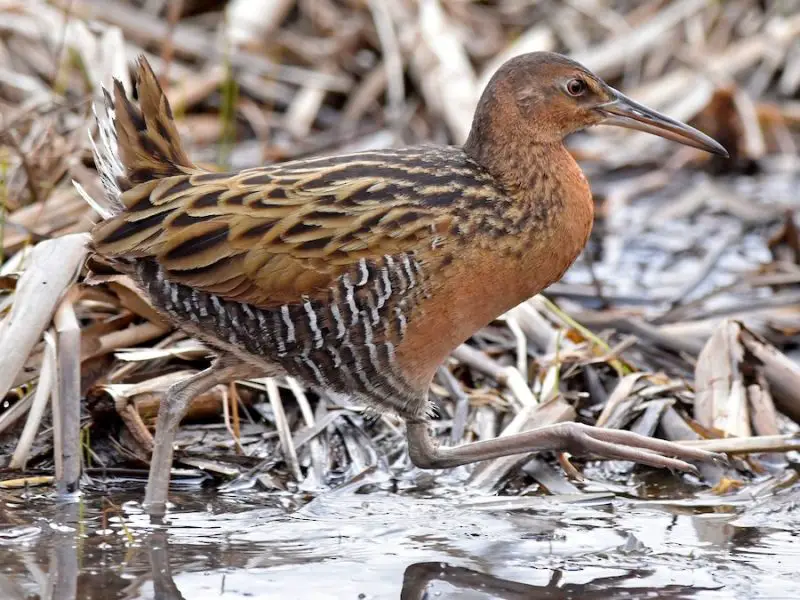
Identification and Behavior
The King Rail is the largest rail species in North America and is one of the most elusive wetland birds in Michigan. Measuring over 15 inches in length, it has a warm chestnut-colored breast, bold black-and-white barred flanks, and a long, slightly decurved bill. Despite its size and striking appearance, it is rarely seen due to its reclusive nature and preference for dense emergent vegetation.
During the breeding season, King Rails become more vocal, announcing their presence with a loud, clattering call that resembles two wooden sticks being knocked together. They are primarily active during dawn and dusk, moving stealthily through reeds and grasses in search of insects, crustaceans, and small amphibians. Their powerful legs and long toes help them navigate muddy, submerged terrain with ease.
Habitat in Michigan
In Michigan, King Rails once bred more widely but are now extremely rare due to wetland loss and fragmentation. They are most likely to be encountered in expansive, undisturbed marshes with a mix of shallow open water and tall emergent vegetation like cattails and bulrushes. Historically, key areas included the Lake Erie shoreline and Saginaw Bay. However, current sightings are infrequent and largely limited to intensive bird surveys or incidental encounters by experienced birders.
Conservation Note
The King Rail is listed as a species of special concern in Michigan and is a high-priority target for wetland conservation initiatives. Habitat protection and restoration efforts, particularly in coastal marshes, are crucial for maintaining any remaining breeding populations. Because the King Rail is sensitive to both water-level fluctuations and human disturbance, preserving large, quiet marshes is essential to its future in the state.
4. Purple Gallinule (Porphyrio martinicus)
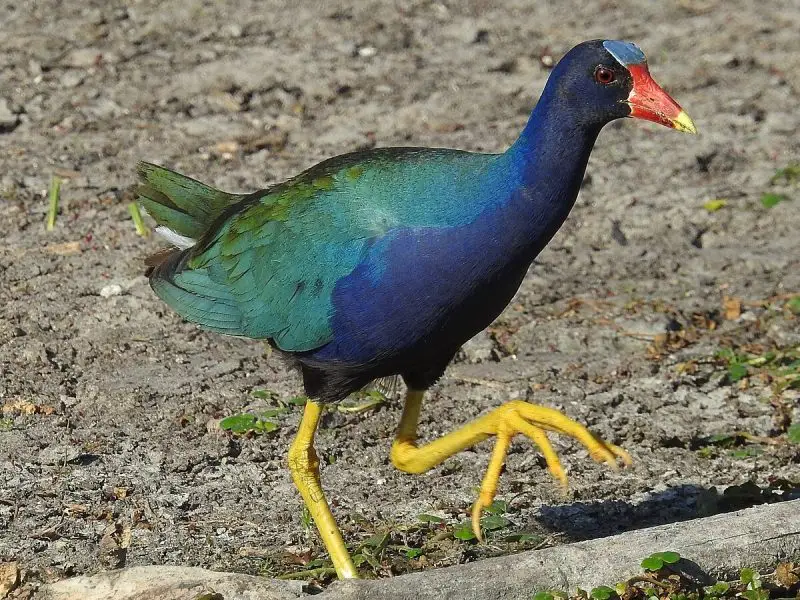
Identification and Behavior
The Purple Gallinule is among the most visually stunning birds to occasionally visit Michigan’s wetlands. About the size of a moorhen, it features an iridescent body that shifts from deep blue to violet and green depending on the light. Its bill is a brilliant red tipped with yellow, and its legs are bright yellow—traits that make it look more like a tropical bird than a typical marsh dweller.
Remarkably agile, this gallinule uses its long toes to walk on floating vegetation such as lily pads, where it hunts for insects, spiders, seeds, and small aquatic animals. It climbs stalks of reeds and water plants with ease, rarely swimming unless necessary. Its behavior is curious and confident, unlike many secretive wetland birds, making it a delight to observe when present.
Status in Michigan
While the Purple Gallinule is a year-round resident in the southeastern U.S. and parts of the Caribbean, it is a rare and irregular visitor to Michigan. Most reports are of vagrants displaced during spring storms or following unusual weather patterns. The southeastern part of the state, especially around Lake Erie and Pointe Mouillee State Game Area, offers the best chance of a sighting during late spring or early summer.
Ecological Interest
Though it does not breed in Michigan, the Purple Gallinule serves as a vivid reminder of the continent-wide connectivity of migratory birds. Its occasional appearances in northern states highlight the importance of preserving stopover wetlands that provide rest and food for even the most unexpected visitors. For birders, its arrival is often a major event, drawing photographers and enthusiasts eager to glimpse this tropical jewel.
5. Black Rail (Laterallus jamaicensis)
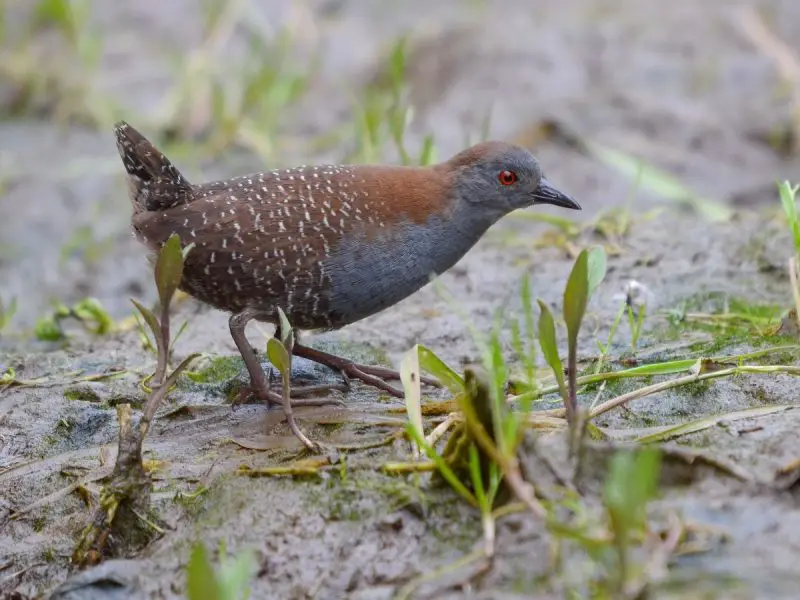
Identification and Behavior
The Black Rail is one of North America’s most elusive and smallest marsh birds, standing just four to six inches tall. Cloaked in charcoal-gray feathers with white speckling on its back and wings, it’s an expert at vanishing into the thickest grasses and sedges. Its red eyes and contrasting chestnut nape provide subtle but stunning field marks—if you’re lucky enough to see one.
This rail is almost never observed in the open. Instead, its presence is usually detected by its distinctive two-part call: a soft, rhythmic “kick-ee-doo” that echoes across wet grasslands at night. Black Rails are crepuscular and nocturnal, active primarily in low light. They feed on insects, seeds, snails, and small aquatic invertebrates, foraging carefully through shallow water and moist soil.
Presence in Michigan
In Michigan, Black Rails are considered extremely rare and irregular. Most reports stem from scattered individuals passing through during migration, although there is limited historical evidence to suggest they may have once bred in the state’s wet prairies and coastal marshes. Today, they are almost never encountered without targeted surveys using playback recordings, often conducted by researchers or expert birders.
Conservation Status
Federally listed as Threatened in the U.S., the Black Rail is at serious risk due to wetland drainage, sea-level rise, and habitat fragmentation. In Michigan, efforts to confirm and conserve any remaining habitat are ongoing but challenged by the bird’s cryptic behavior and uncertain presence. Conservationists emphasize the importance of preserving wet grasslands and ephemeral wetlands, which serve not only rails but also many other declining species.
6. Limpkin (Aramus guarauna)
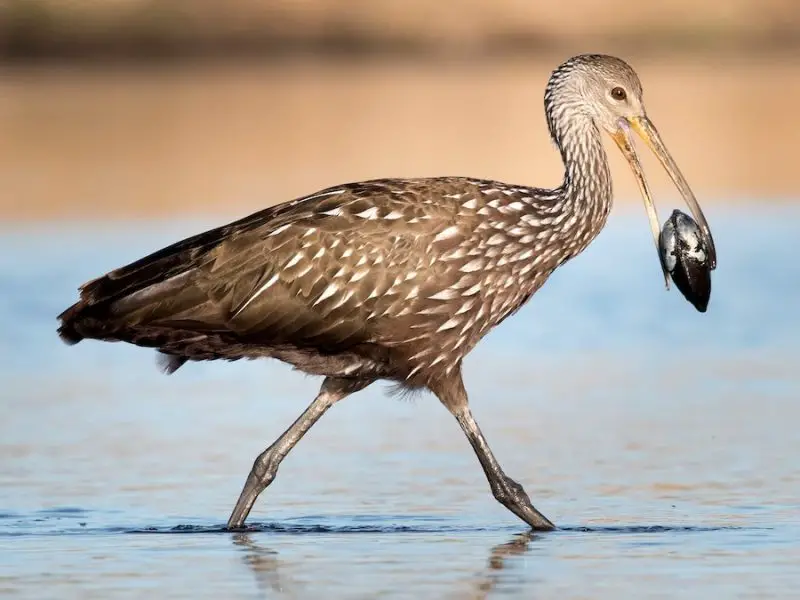
Identification and Behavior
Strange and spectral, the Limpkin is a tropical bird with a growing presence in Michigan. Standing over two feet tall, it resembles a lanky crane but is more closely related to rails. Its plumage is a streaky mix of brown and white, offering camouflage in dappled wetland light. Its most haunting feature is its voice—a loud, wailing cry that can resemble a child’s scream and is often heard at night.
Limpkins feed almost exclusively on freshwater apple snails, using their long, curved bills to extract snails from their shells with surgical precision. They are solitary and deliberate in behavior, slowly stalking through the shallows as they forage. Their reliance on a specific prey item makes them sensitive to environmental changes that affect snail populations.
Status in Michigan
Historically confined to the southeastern United States, Limpkins have recently expanded their range northward, with Michigan seeing an uptick in confirmed sightings since the early 2020s. Most observations occur in spring and summer, particularly in the southern counties near large, snail-rich wetlands. Some Limpkins may be pioneering new territory, while others may be overshooting their typical migration routes.
Ecological Significance
The appearance of Limpkins in Michigan may be an early indicator of climate-driven range shifts among wetland birds. Their presence raises questions about future changes in wetland ecology, including the spread of exotic snail species and the adaptability of native bird communities. Birders now consider Limpkin sightings a highlight of any southern Michigan wetland exploration.
Conclusion: Discovering the Hidden Wetlands
These six wetland birds represent the secretive heart of Michigan’s marshes. Some, like the American Coot and Sandhill Crane, are familiar sights to local birders. Others, like the King Rail and Black Rail, remain ghosts in the cattails—heard more often than seen. Whether rare visitors or local icons, Gruiformes offer a window into the health of our wetland ecosystems and remind us that even in a state known for its forests and lakes, the marshes still hold magic. Grab your binoculars, tread quietly, and listen—there’s a wild world waiting just beyond the reeds.

